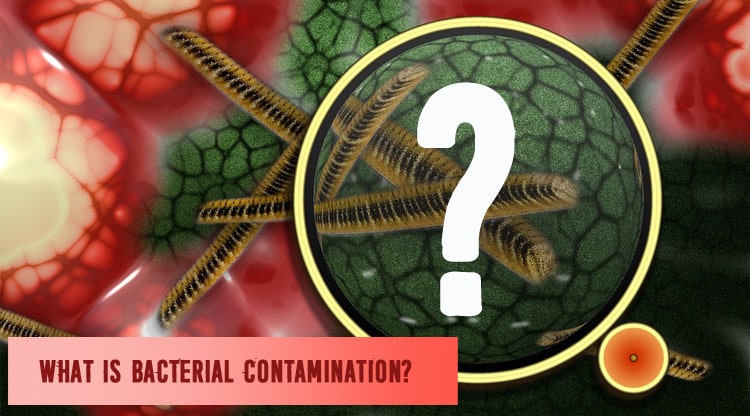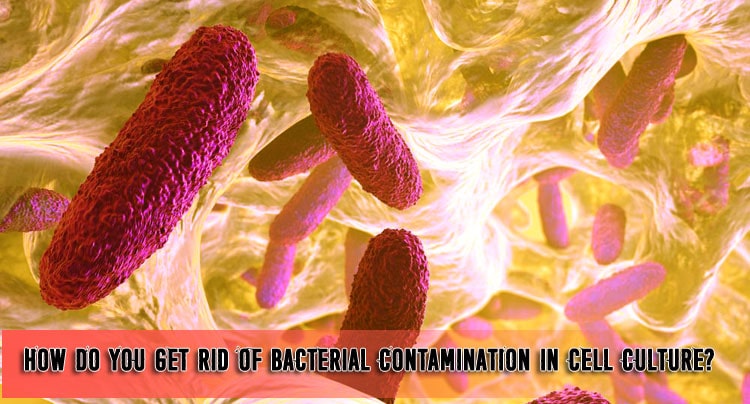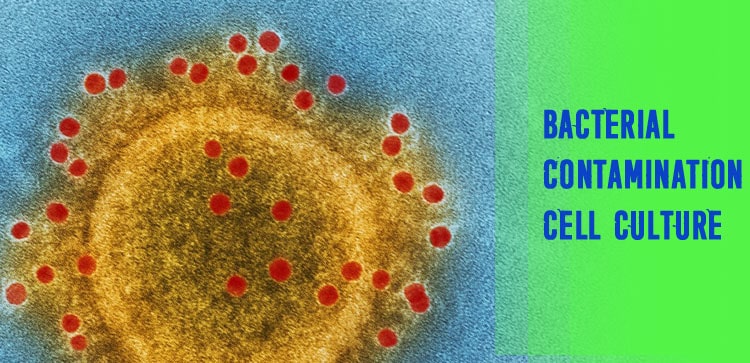Pollution is usually the enemy of cell culture. Preventing and avoiding contamination is one of the keys to the success of this cell culture. First of all, we must pay close attention to pollution.
Otherwise, all our previous attempts failed. Just don’t waste time. But it will waste manpower and material resources, even causing irreparable damage.
However, sooner or later, each of us will have pollution in our culture. But it’s hard to tell if you have pollution in the early stages or if the culture is just rubble.
Therefore we would like to give you a brief description of the appearance of bacteria, yeast, and fungi in culture. Learn about pollution prevention, aseptic and sanitation, quality management.
You can also get more help in our course on Mycoplasma Detection and Elimination. Also, in today’s article, we will discuss bacterial contamination in cell culture.
What is bacterial contamination?

What is bacterial contamination
Bacterial contamination is common contamination in laboratory cell cultures. Even cell culture solutions usually include antibiotics. It can cause contamination due to careless operation.
Rural-positive bacteria such as Bacillus subtilis, Escherichia coli. Also most common are Pseudomonas and other Gram-negative bacteria and Staphylococcus Albicans.
Once cultured cells become contaminated with bacteria, the culture solution will become contaminated. Also, the pH will change. There are also some cultural solutions that do not change much when observed with the naked eye.
Also, contaminated by bacteria under a microscope. So, observe it carefully every day. After contamination, the cells undergo pathological changes.
The intracellular particles grow, become dense, and eventually become round. It also falls and dies, which reduces test failure and cell lines (lines).
How is bacterial contamination detected in cell culture?
Unlike “normal” bacteria, these tiny prokaryotes have no cell wall. Along with other bacteria with weak cell walls – it contains ureaplasma, ecoleplasma. Also angioroplasm, piroplasm type – they form a class of molecules.
Nevertheless, the terms “mycoplasma” or earlier “pleuropneumonia-like organisms (PPLOs)” and “molecules” are often used interchangeably. Mycoplasmas are resistant to antibiotics due to a lack of cell walls.
Also, namely beta-lactam antibiotics, which do not inhibit the formation of peptidoglycans. These include penicillin derivatives, cephalosporins, and carbapenems. In addition, they are very flexible in shape.
This, in addition to their small size (0.1 to 0.8 mm in diameter), makes them difficult to filter out of solutions. Mycoplasma species easily penetrate the membranes of 0.2 film filters. Which often gives way to media, best, and other internal-static reconnections.
General dependence on complex, enriching media (including host cell nutrition) and defined environmental conditions. Both are fully realized in cell culture.
Their very slow growth rate makes it difficult to detect infected cells using common bacteriological farming methods. They gain density due to their small size and lack of cell walls.
It can also achieve high concentrations in cell cultures without being detected by cytopathogenicity or even microscopic examination. Reducing the consequences of mycoplasma contamination, however, is not right;
How do you get rid of bacterial contamination in cell culture?

How do you get rid of bacterial contamination in cell culture
What do you know about bacterial contamination cell culture? Bacteria are like fine black sand under a simple inverted microscope. Also, they can have different sizes depending on the infected bacteria.
The culture medium will usually become turbulent and yellow. It has a significant effect on cell growth. Carefully inspect the containers for disinfection.
See if ventilation time and pressure are sufficient when autoclaving! In particular, the contamination of pipettes and other items that come in contact with the storage medium occurs twice in a row.
So be careful! Check if there is any disturbance in the culture medium before the next use! Combine the relevant antibiotics with the culture medium.
How can you tell if your culture is contaminated?
In terms of cell contamination, people think of bacteria in cells, turbid culture media, and illegal invaders in culture bottles.
Also, viruses and chemical contamination are very important for the health of cell cultures. Ensuring that the cell line is free of infection is also a key factor in getting reproducible results.
How common is the problem of contamination during cell culture? Usually, about 50-5-0% of cell culture is contaminated by mycoplasma; One study found that more than 25% of viral infections occur in normal cell lines.
The key to pollution control is how to detect pollution. Bacteria, fungi, and yeast contaminants are usually visible to the naked eye. It can also kill cells quickly.
However, subtle morphology can make it difficult for microbial invaders to identify as important microplasmas. In contrast, traditional light microscopy cannot detect the virus.
So usually, virus infection is discovered only when it comes to unexplained segregation. There are also other symptoms of poor cell health or even cell death.
What are the five physical contaminants?
Physical contaminants in food, in general, are a global food safety issue. Metals, bones, plastics, glass shards, or any other foreign material can enter the food production supply chain. This can result in fatal damage.
It is not just a matter of protecting the health of the consumer. Reproduction of the product caused by physical contaminants has a reputation brand. It can also damage the quality of the brand in a very short time.
Foreign body contaminants in food are a serious problem in the world. In recent years, many resistant products have arrived. In important markets such as the European Union and the United States.
There are also food safety incidents involving physical contaminants entering the production-supply chain. For example, a British bakery supplier recently had concerns about contamination from glass shards.
This is why various meat and vegetable pie products reappear. In addition, large, well-known chains remove products from retail stores.
This kind of reconsideration easily costs the manufacturing enterprise millions of yuan. In addition, there is often a chain reaction in the entire production line of the entire enterprise.
Therefore, food production and processing companies must avoid the risk of physical contaminants at any cost.
Conclusion
In conclusion, however, a few words of consolation. There is probably no cell culture laboratory that has not already experienced one or the other contamination problem.
Finding the effective source, but often the boundaries of a detective masterpiece.
In the case of small-scale pollution, large-scale research is usually not appropriate unless the causes are obvious. Hopefully, you have got a clear idea about bacterial contamination cell culture.

